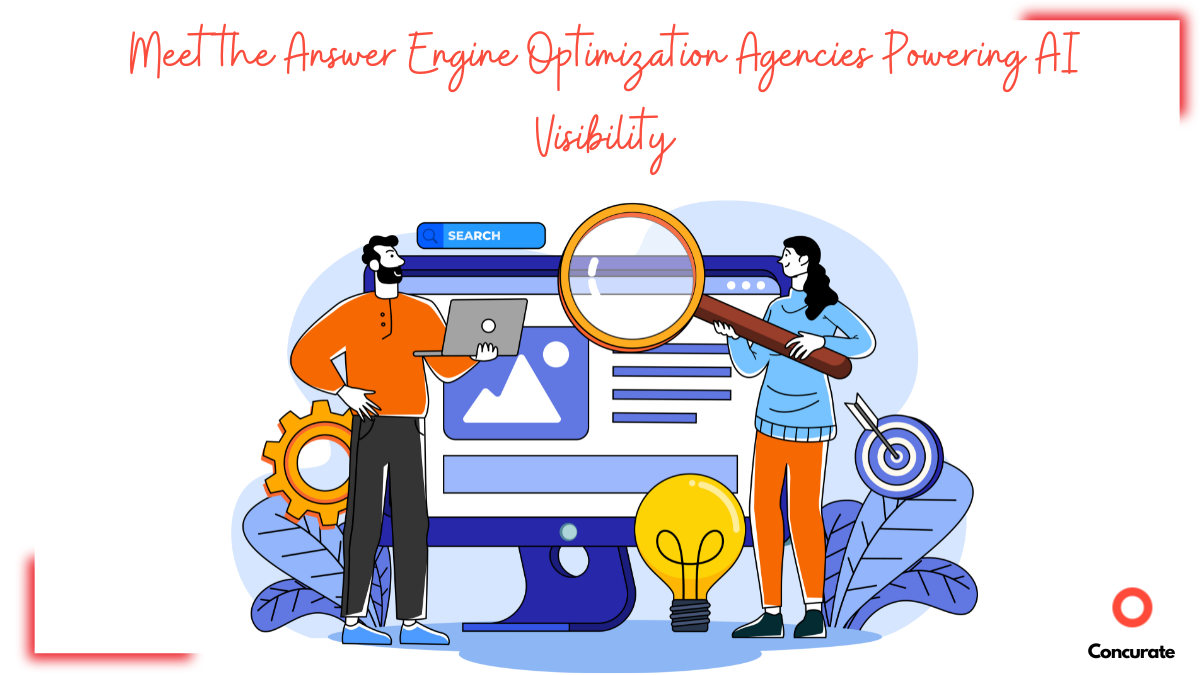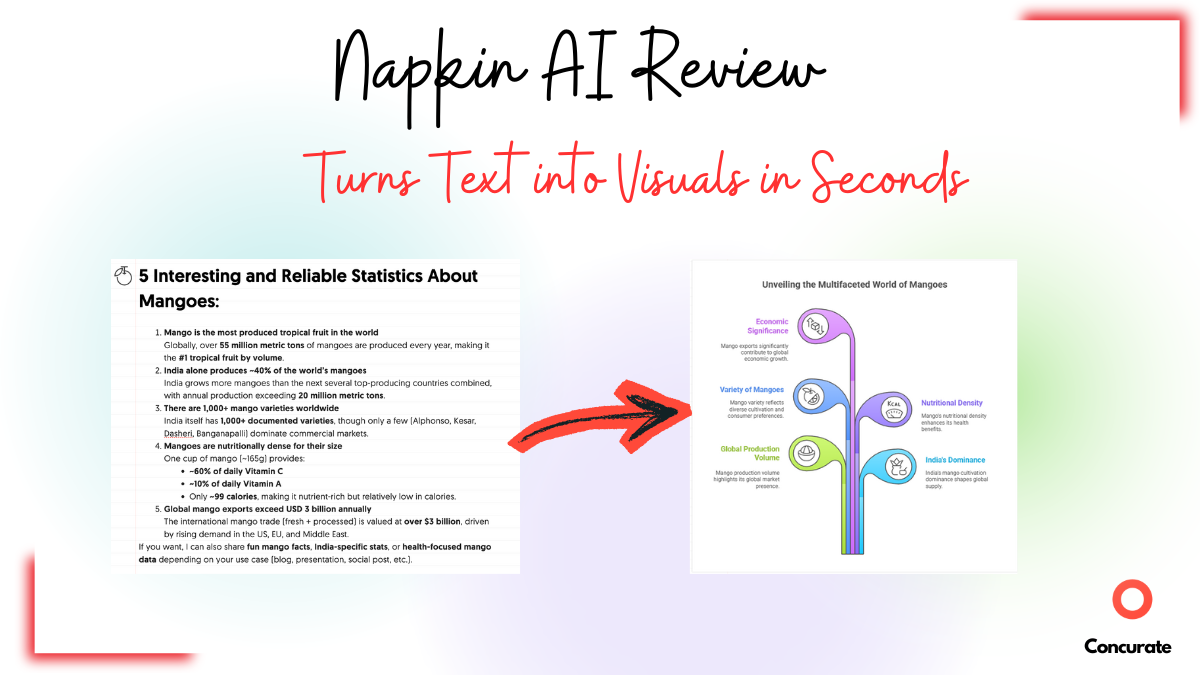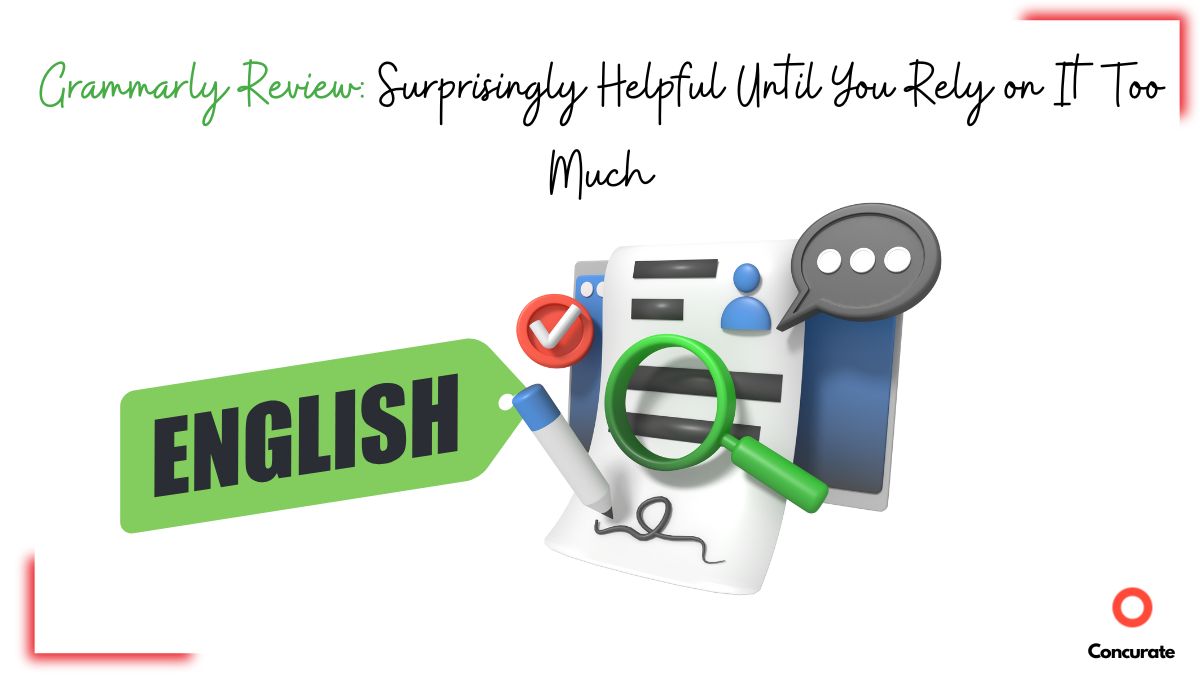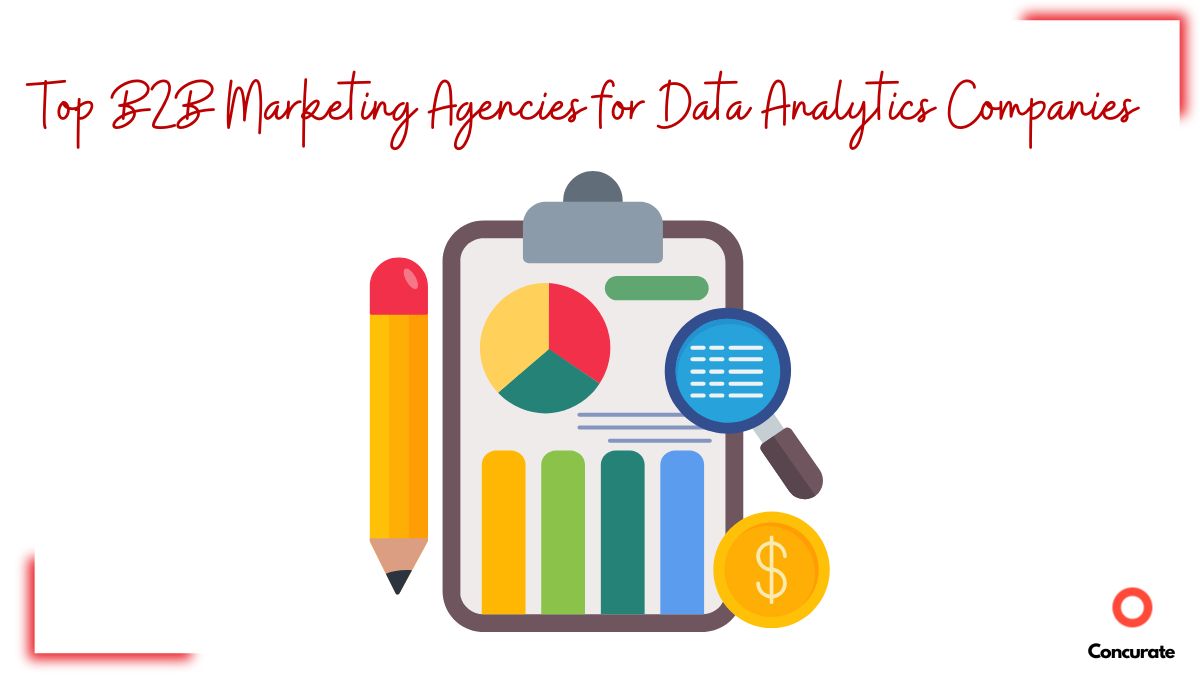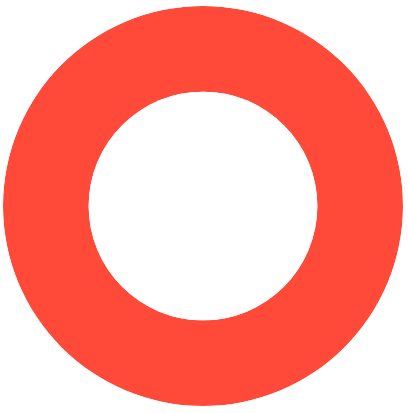Most people confuse Answer Engine Optimization(AEO) with Generative Engine Optimization(GEO), thinking they are interchangeable. They are not. They might share the same DNA but they play in completely different arenas.
Where Generative Engine Optimization folds your brand into the background of a stitched-together summary, Answer Engine Optimization makes your content the chosen answer.
GEO wins presence. AEO wins authority. And if your goal is to win authority, AEO is your best bet.
And who can do it better than professionals? In this article, we spotlight 15 answer engine optimization companies in 2025 that can make your brand’s content the chosen answer in the era of AI search.
Why AEO Matters In 2025
Zero-click has now become the norm. Back in 2024, SparkToro found that 60% of Google searches ended without a click. By April 2025, Ahrefs reported that AI summaries alone can slash clicks by more than 34%, with informational content hit the hardest.
That shift means fewer visitors ever reach your website. In fact, Ahrefs sharply titled their piece: “Welcome to Zero-Click Search. Please Leave Your Traffic at the Door.”
If you want your brand to survive in this new reality, it has to show up as the answer. That is exactly where AEO comes in. Now that the picture is clear, let’s look at 15 agencies making your brand the answer in 2025 and beyond.
Meet the Agencies Making Brands the Answer in 2025
Not all agencies can do AEO. It takes a mix of technical precision, content built for engines and people, and the authority to be trusted as the answer.
The firms you’ll see below bring that mix together. They are the specialists brands turn to when visibility depends on more than ranking.
1. Concurate – Where GEO Meets AEO for Real Buyer Visibility
At Concurate, we’re not just chasing SERP rankings. Our goal is to make sure your brand becomes the answer.
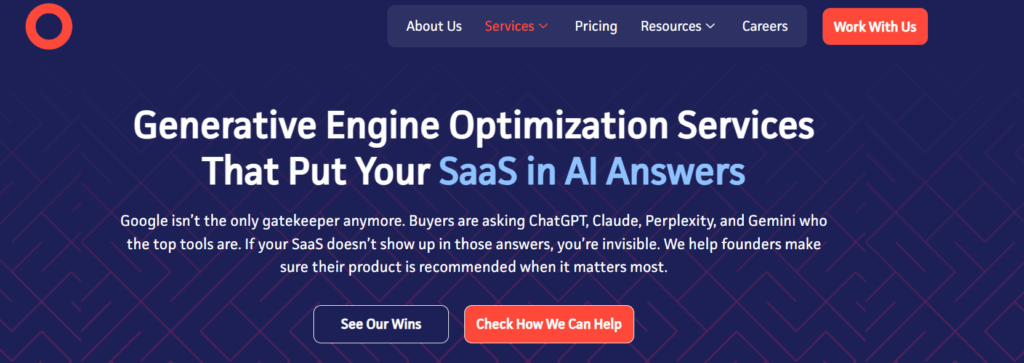
Source – Concurate
Generative Engine Optimization and Answer Engine Optimization are often treated as separate lanes. We’ve built our practice at the intersection. Because we know that today’s buyers don’t stop at Google. They’re asking LLMs and voice assistants for options. If your brand isn’t showing up there, you don’t exist in the conversation.
That’s why our approach blends SEO clusters, structured AEO signals, and generative visibility tactics.
For one cybersecurity client, we created content clusters around their key service offerings. While we got stellar results and 100+ leads out of it in six months, one of the most telling figures was the number of impressions.
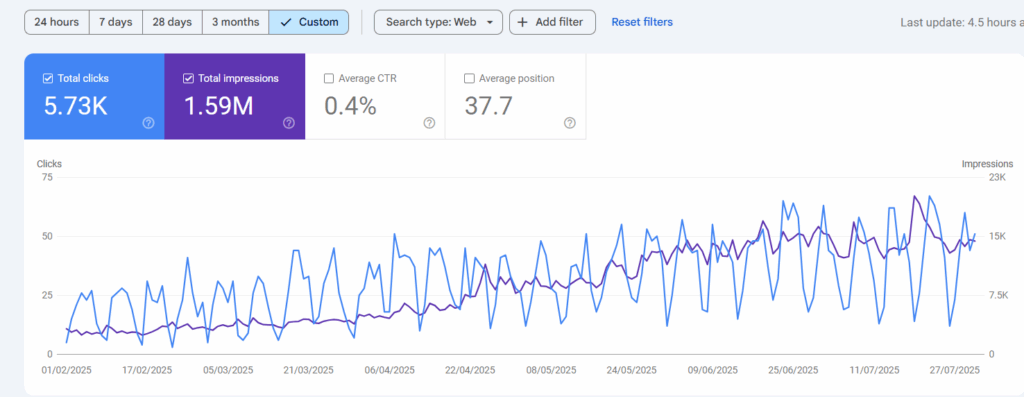
The staggering number of zero clicks didn’t scare us. It was proof our strategy was working. Our client’s brand and content repeatedly appeared in Featured Snippets and across AI surfaces like ChatGPT, Gemini, and Claude.
Our AEO Playbook in Action
Here’s how we make brands visible across both search and AI engines:
- Buyer Query Mapping – We research how real buyers phrase questions in forums, reviews, and communities, then optimize content to match.
- AI Visibility Audits – We benchmark how often our client and their competitors appear in ChatGPT, Gemini, Perplexity, and Google’s AI Overviews, around their key offerings. Then we create content targeting those angles for better reach.
- Structured Data & Schema – Our content is enriched with FAQ sections, How-Tos, and emerging standards (like llms.txt) so that AI engines can parse it easily.
- Authority Building – We strengthen brand signals through mentions in trusted third-party sites, reviews, and analyst sources that LLMs rely on.
- Continuous Monitoring – We regularly track generative engine answers, adapt clusters, and ensure our clients stay visible as AI algorithms evolve.
Get your brand GEO- and AEO-ready with us. Book a strategy call and claim your spot in AI answers.
2. Victorious
Victorious has built its AEO practice around a simple idea: ranking alone isn’t enough when AI overviews own the first screen.
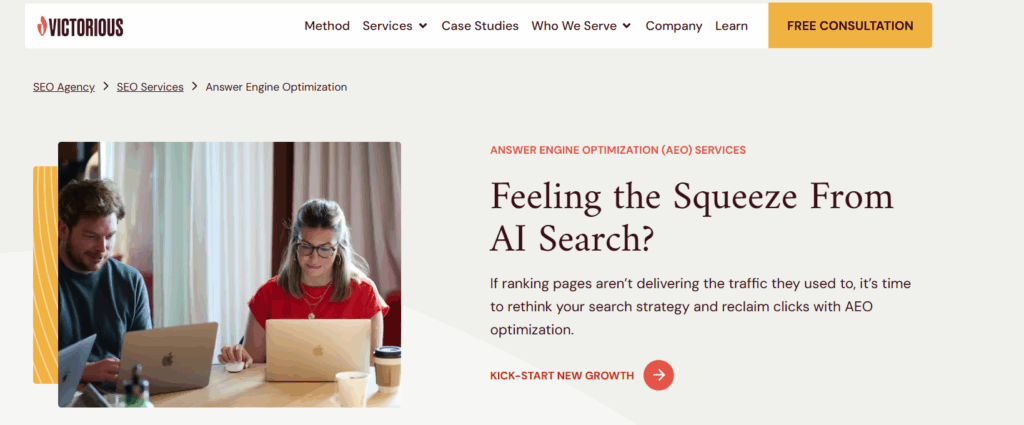
Source – Victorious
The agency focuses on reshaping content into direct, high-confidence answers, supported by structured data and technical cleanup so engines can actually parse it.
Their process leans on question mapping, content rewrites, and schema markup to make brands more “answer-ready” across Google, ChatGPT, and Perplexity.
The agency stresses that AEO requires both content and technical alignment, positioning itself as a partner that integrates answer-focused tactics into broader SEO programs.
Notable Clients: GE Digital, SoFi, Delta Dental, Bitly
3. Ignite Visibility
Ignite Visibility positions itself as a full-service digital marketing agency, but its answer engine work comes through GEO and voice optimization.
The firm emphasizes tailoring content for Google AI Overviews, voice assistants, and other AI-driven search features by layering structured data, schema markup, and FAQ-style content into client sites.
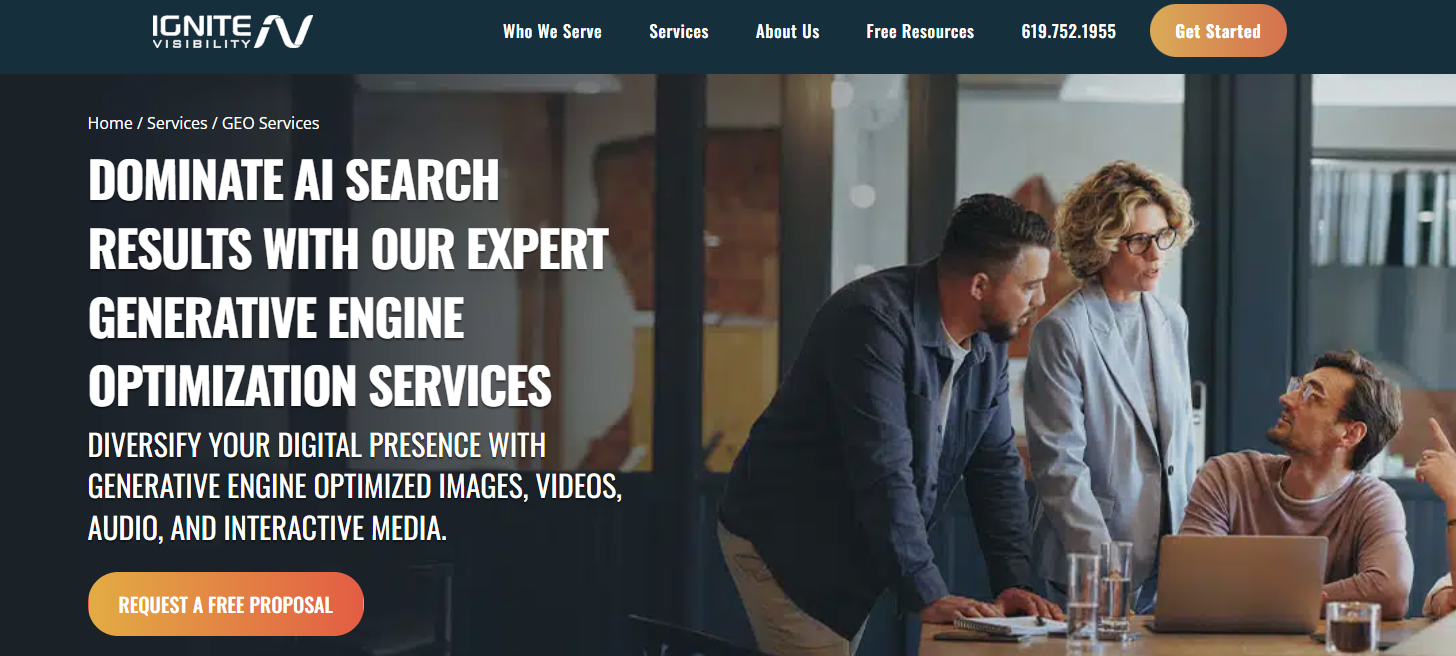
Source – Ignite Visibility
Its GEO program covers question-first content creation, snippet optimization, and E-E-A-T enhancements designed to improve retrievability in AI summaries. Ignite also integrates voice search optimization, preparing content to surface on devices like smartphones and smart speakers.
The agency presents AEO not as a standalone product but as part of a broader mix that combines technical SEO, paid media, and digital PR to help brands stay visible as AI reshapes search.
Notable Clients: Experian, Tony Robbins, The Knot
4. First Page Sage
First Page Sage positions itself the #1 AEO agency, and treats AEO as a discipline of its own rather than an add-on. Their practice is built around six pillars: full audits, authoritative content creation, structured data implementation, ongoing optimization, reputation amplification, and alignment with broader SEO and marketing goals.
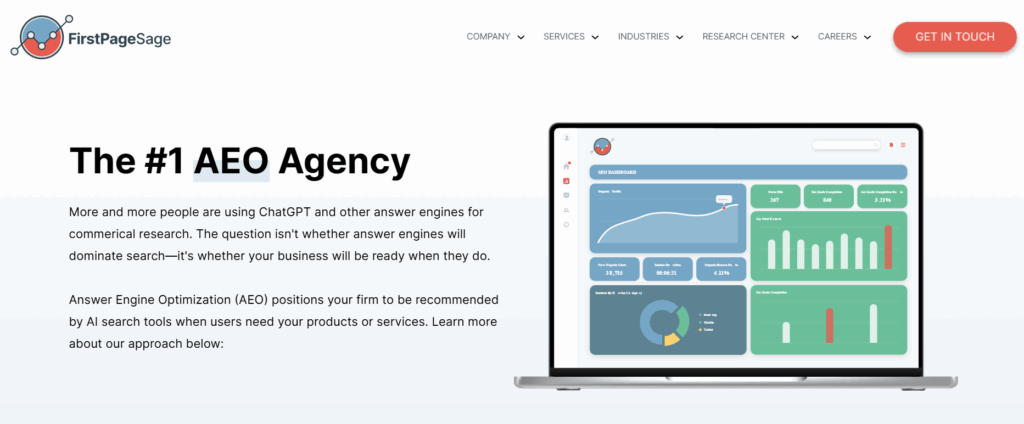
Source – First Page Sage
What sets them apart is how they approach answer engines as distinct ecosystems. From ChatGPT and Perplexity to SearchGPT, their team researches the ranking factors inside each recommendation algorithm and tailors campaigns accordingly.
For brands aiming to be seen as industry authorities, First Page Sage positions AEO as both a search strategy and a thought leadership play.
Notable Clients: Salesforce, Logitech, Verizon, U.S. Bank
5. WebFX
WebFX approaches AEO through the lens of what it calls OmniSEO™ – a framework designed to make brands visible across both traditional search and AI-powered engines.
Their emphasis is on building answer visibility everywhere users turn: be it Google AI Overviews, Bing Copilot, Perplexity, ChatGPT, and even Meta AI.
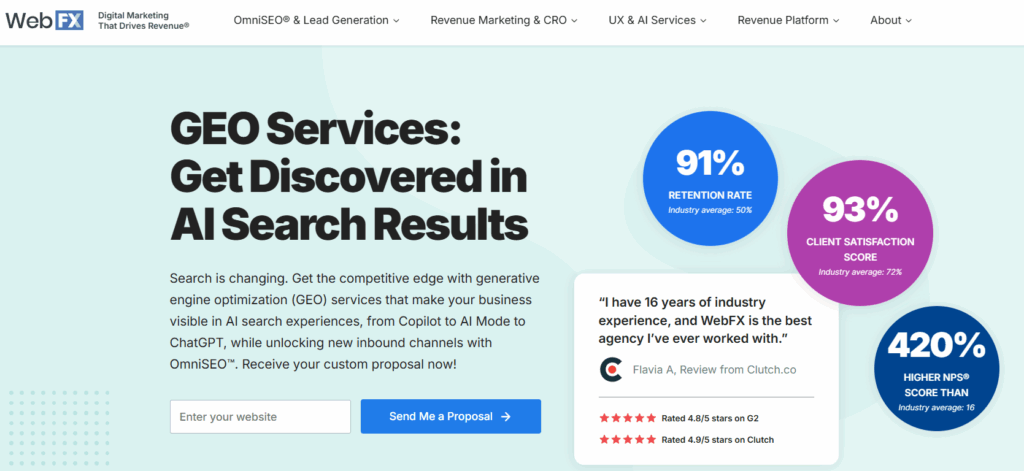
Source – WebFX
The agency’s differentiator lies in its scale and data. With in-house platforms like RevenueCloudFX, they mine billions of data points to refine how content is read, parsed, and surfaced by AI models. For clients, that translates to structured strategies covering schema, content enrichment, and answer engine reporting at volume.
Notable Clients: Verizon, Sysco, Subway, Wrangler
6. Amsive
Amsive approaches AEO through what it calls “Audience Science®”, a data-driven way of shaping search visibility around the questions real customers ask.
Their service cover the core areas of answer engine optimization, including topic ideation around clustered queries, structured content aligned with LLM retrievers, and technical cleanup for AI crawlability.
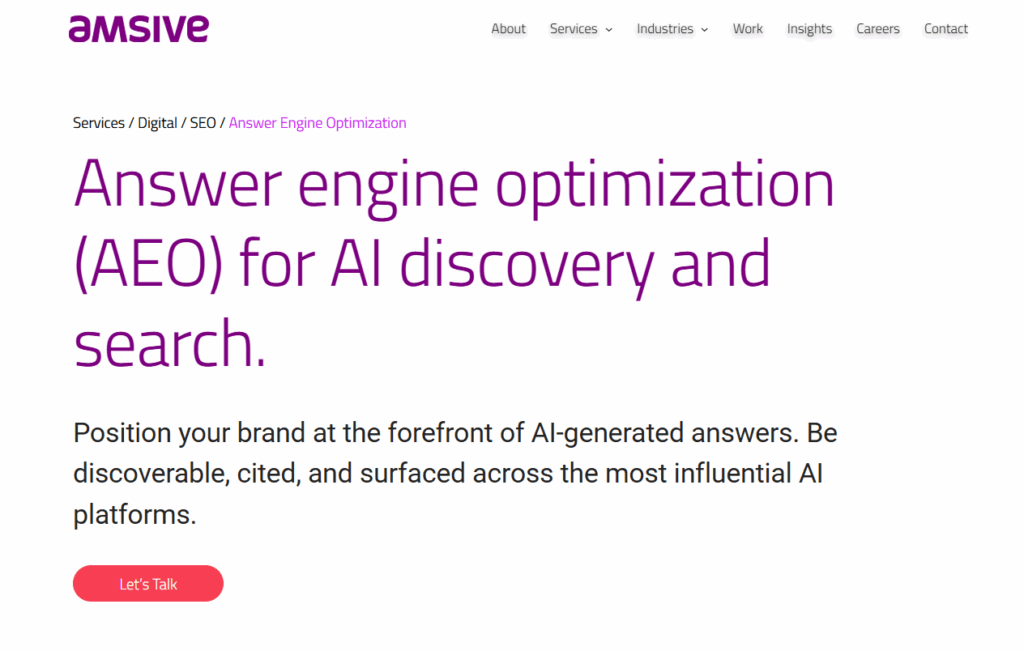
Source – Amsive
They also emphasize consistency in brand citations and extend optimization to multimedia formats like video and podcasts, anticipating how multimodal AI search will surface answers.
Where Amsive differentiates is in measurement. They track how often a client is cited across generative engines with “share of voice” analysis, while monitoring sentiment and competitor visibility. That feedback loop informs both content and PR, tying AEO to broader brand performance.
Notable Clients: Emergient, Vermont Blue Advantage, Commerce Bank, University of Tennessee
7. Spicy Margarita
Spicy Margarita positions itself as a GEO and AI SEO partner for B2B companies, but much of what it delivers fits squarely under AEO. The agency focuses on revenue-first search strategies that place brands inside AI-driven answers.
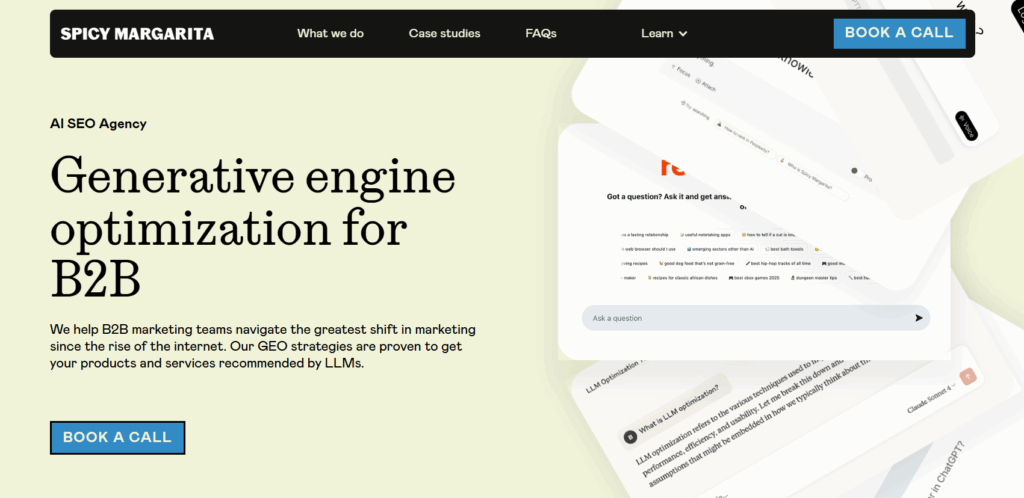
Source – Spicy Margarita
Their services blend traditional SEO with answer engine tactics: on-site content structured for LLM retrieval, schema and entity optimization, reputation management to control how brands are described, and visibility audits that show where competitors are winning citations. Spicy Margarita also runs a dedicated LLM Visibility program, designed to secure mentions in trusted sources and ensure companies are consistently surfaced in AI-generated responses.
Notable Clients: Eton Venture Services, Piktochart, EssayGrader
8. Flow Agency
Flow Agency is a boutique B2B marketing firm that focuses on SaaS and professional services. Instead of using the label Answer Engine Optimization, they position their offering as LLM Optimization, but their work closely parallels AEO.
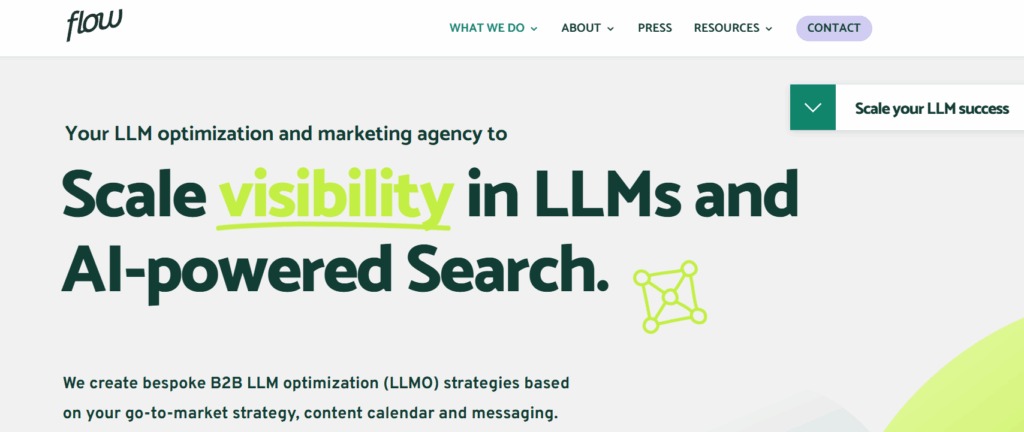
Source – Flow Agency
Their programs are designed to help brands gain early-mover visibility in AI-powered search platforms. Their services include technical SEO for AI discoverability, structured content built around real buyer questions, and auditing which sources LLMs cite so clients can appear in trusted references.
By integrating LLMO with broader B2B SEO and paid strategies, Flow Agency aims to make clients answer-ready for both organic and AI-driven discovery.
Notable Clients: Betterworks
9. Omniscient Digital
Omniscient Digital positions itself at the intersection of SEO, content, and AI. While they brand their service as Generative Engine Optimization, the practice closely mirrors AEO.
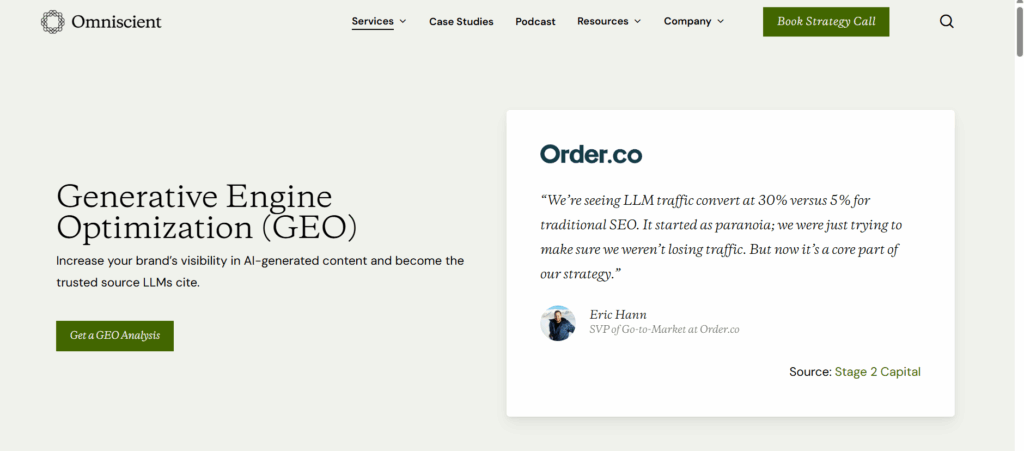
Source – Omniscient
Their focus is on making B2B software companies the sources large language models pull from. That includes producing content designed to be “source-worthy,” optimizing brand and author entities, engineering citations through PR and backlinks, and ensuring technical readability for AI crawlers.
Notable Clients: Smartling, Lokalise, GatherContent, AppSumo
10. Animalz
Animalz leans into AEO by combining editorial depth with technical alignment.

Source – AnimalZ
Their programs blend micro-refreshes, original research, and citation outreach to get brands surfaced in ChatGPT, Perplexity, and Google AI Overviews. Animalz also tracks AI mentions directly, giving teams visibility into where they’re showing up, and where they’re being overlooked.
Instead of chasing vanity traffic, Animalz frames AEO as trust-building at scale: get mentioned in the answers that matter, and the pipeline follows.
Notable Clients: Airtable, Atlassian, UiPath, Wistia, Intercom, Amazon
11. Brainlabs
Brainlabs treats AEO as part of a wider media strategy. Their pitch is simple: AI engines are rewriting discovery, and visibility now depends on being understood by machines as well as people.
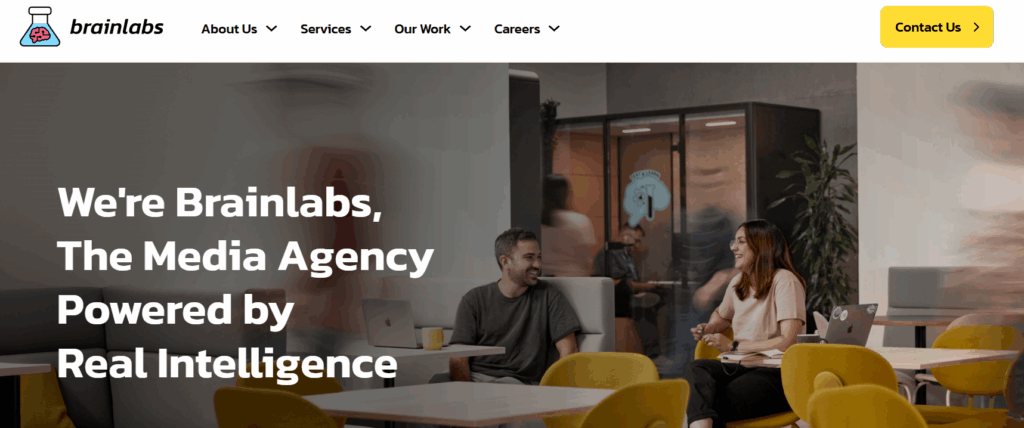
Source – Brainlabs
They fold AI SEO into cross-channel programs, combining technical SEO with creative, retail media, and programmatic. Their goal is being surfaced in the right context across Google AI Overviews, ChatGPT, and retail search engines.
Brainlabs’ strength lies in scale: they use their proprietary Cortex AI platform to test, measure, and optimize at speed, making AEO a lever inside a much larger growth engine.
Notable Clients: Microsoft, PepsiCo, Estée Lauder, eBay, American Express, Formula 1, Lego
Related Read: 15 SaaS Leaders Reveal How to Get Recommended by ChatGPT & Perplexity
12. NoGood
NoGood positions AEO as the next evolution of organic growth. They’ve built a dedicated practice around it, from AI visibility audits and technical fixes to content refreshes designed specifically for AI readability.
What makes them stand out is Goodie, their proprietary AEO platform that tracks citations, visibility, and conversion impact across LLMs in real time.
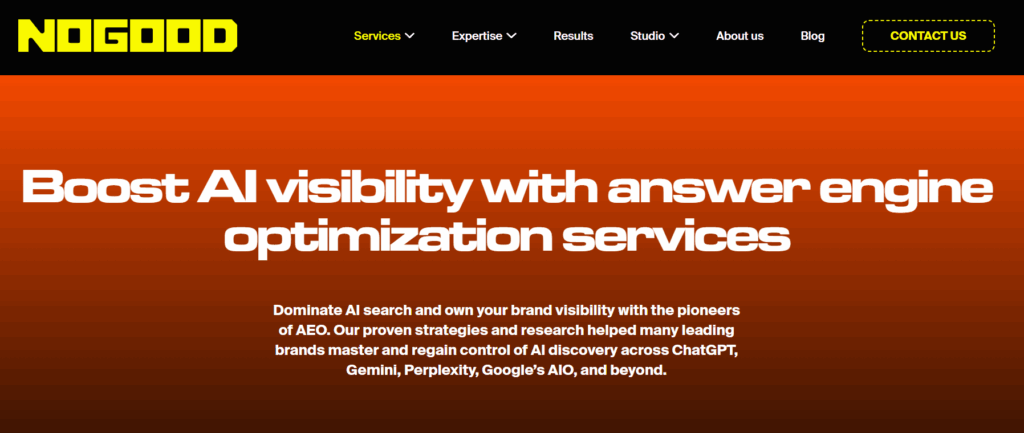
Source – NoGood
Their approach is holistic: owned content, earned citations, Reddit and community engagement, technical architecture, and digital PR all stitched together into one AEO strategy.
Notable Clients: JVN Hair, Spring Health, Amyris
13. Marcel Digital
Marcel Digital treats AEO as more than an add-on to SEO. Their offering is built around making brands discoverable in AI-driven environments like Google’s AI Overviews, Microsoft Copilot, ChatGPT, and Perplexity. They run AI visibility audits, tighten technical performance, and implement structured data so content can be parsed and cited by answer engines.

Source – Marcel
What differentiates Marcel is the way they blend traditional SEO infrastructure with AEO tactics, balancing schema, FAQs, and AI-readable content with digital PR and authority building.
For companies already investing in organic growth, they’re positioned as a partner that can extend those gains into AI search without reinventing the wheel.
Notable Clients: Komori, John Hopkins University, Ziegler, Kelloggs
Key Takeaways: How to Get Your Brand Into AI Answers
Answer engines aren’t mysterious black boxes. They reward clarity, authority, and intent-driven content. Here are strategies any brand can use to increase their chances of being surfaced in ChatGPT, Gemini, Claude, or Google’s AI Overviews:
- Build FAQ-Rich Pages: Create content that mirrors real buyer questions. FAQs, How-To guides, and checklists are easier for AI to parse and often pulled directly into answers.
- Use Structured Data & Schema: Add FAQ schema, How-To schema, and emerging protocols like llms.txt so your content is machine-readable and answer-ready.
- Optimize for Buyer Queries: Map how buyers actually phrase questions on forums, Reddit, and review sites. Shape content around those exact conversational queries.
Anyone can list tactics. But we at Concurate tie them into a system that drives leads, visibility, and durable AI presence.
hbspt.forms.create({ portalId: “6897012”, formId: “3bff4b28-825c-4422-806c-ee65993ef7a0”, region: “na1” });Why Concurate Is the Best Partner for Answer Engine Optimization
At Concurate, SEO isn’t an afterthought; it’s a crucial part of our creation process.
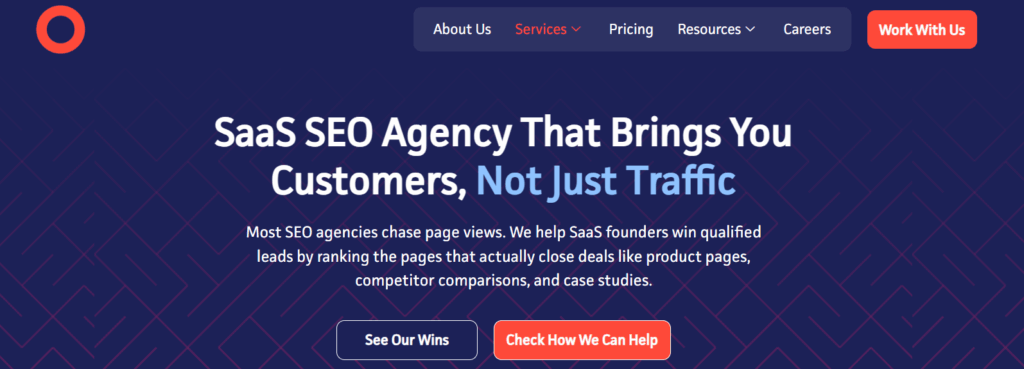
That’s why we’re built differently from “tailor shops” that just tweak keywords. We design strategies rooted in real buyer intent and connect them with the levers that actually influence visibility: enterprise SEO, international SEO, programmatic SEO, generative engine optimization, and answer engine optimization. Each of these is part of the same ecosystem, and we know when and how to use them for maximum impact.
What sets us apart is execution. We don’t believe in cookie-cutter playbooks. Every strategy we build is tuned to what will move the needle for your brand. Sometimes that means building generative engine authority. Other times it means going deeper into AEO signals or scaling with programmatic. The difference is that we know how to connect these disciplines into one system that gets you visible where decisions are being made.
Our case studies speak for themselves: challenger brands ranking alongside giants, cybersecurity players showing up in AI shortlists, Patent tech companies hitting top-three mentions in AI overviews.
The reason is simple: we take content seriously. Every cluster, every schema, every signal is designed with the goal to make your brand the answer.
If you’re ready to own visibility across search engines, generative engines, voice assistants, and AI overviews, book a consultation with us today. Let’s get your brand cited, shortlisted, and chosen.
Frequently Answered Questions
1. What is Answer Engine Optimization?
Answer Engine Optimization is the process of structuring and presenting content so AI engines, search platforms, and voice assistants can pull it as the definitive answer.
Think featured snippets on Google, “People Also Ask” boxes, Siri/Alexa reading your response, or ChatGPT citing your page as the source of a fact.
AEO is the play for authority. It’s about being the name users remember when they ask a question.
2. What is Generative Engine Optimization, and how is it different from AEO?
Generative Engine Optimization operates one level above AEO. Instead of winning the single answer slot, it focuses on making sure your content is included, synthesized, and blended into multi-source AI-generated responses.
Think Google’s AI Overviews, Perplexity summaries, or ChatGPT’s multi-paragraph answers that mix several sources together. Sometimes you get cited. Sometimes you don’t. But your influence shapes what the user reads.
Here’s how AEO and GEO compare:
| Dimension | AEO – Answer Engine Optimization | GEO – Generative Engine Optimization | SEO – Search Engine Optimization |
| Primary goal | Be the named answer for a specific question | Be included in a multi-source AI summary | Rank higher in search engine results pages |
| Typical surfaces | Featured snippets, PAA boxes, voice assistants, AI facts | AI Overviews, ChatGPT, Perplexity, Gemini long-form answers | Google/Bing SERPs |
| Attribution | High – usually cited or read aloud | Variable – sometimes cited, often blended | Always visible through ranking/link |
| Content that wins | Concise Q&A, fact boxes, schema, tight claims | Depth, semantic breadth, corroborated sources | Keyword-optimized, link-backed pages |
| Business value | Authority + recall: users remember who answered | Presence + influence: shape the synthesis users read | Visibility + clicks: users land on your website |
3. Why is Answer Engine Optimization important in the era of generative search?
Because generative AI is shrinking the space for visibility. Instead of ten blue links, users see one snippet or a handful of citations. If your brand isn’t the answer, it’s invisible.
AEO makes sure you don’t just show up on Google but also inside AI Overviews, voice assistants, and LLM-powered shortlists where buying decisions are happening.
4. Can you do Answer Engine Optimization yourself?
Yes, but it’s tricky. If you want to experiment, start with:
- Adding FAQ sections and How-To guides to your content.
- Using schema markup (FAQ, HowTo, Organization).
- Aligning copy with the way buyers phrase questions in forums, reviews, and Reddit threads.
- Monitor if your brand appears in ChatGPT, Perplexity, or Google AI Overviews.
But scaling this consistently requires a system. You need continuous monitoring, third-party authority building, and tailored content clusters, which is why agencies like Concurate exist. You can book a consultation today to get started.
Disclaimer: The information presented in this article is compiled from publicly available sources, including company websites, industry reports, and social media. All trademarks, brand names, and logos mentioned are the property of their respective owners. We do not claim any ownership of third-party marks, nor do we imply endorsement or affiliation. This article is intended for informational purposes only.


